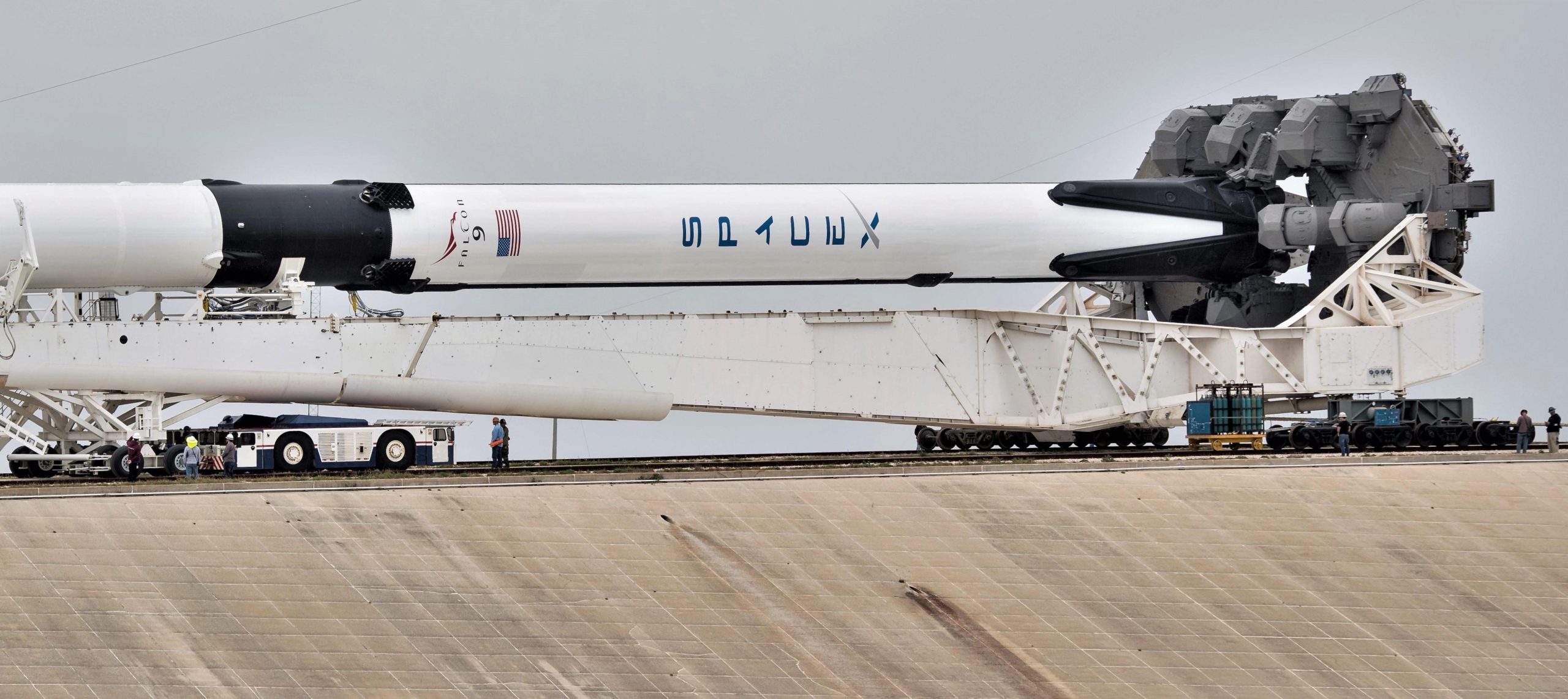

News
SpaceX teases extreme Falcon 9 launch cadence goals in Starship planning doc
Published as part of an August 2019 environmental assessment (EA) draft for Starship’s prospective Pad 39A launch facilities, SpaceX revealed plans for a truly mindboggling number of annual Falcon 9 and Falcon Heavy launches by 2024.
As environmental planning documents, the figures should be taken with a large grain of salt and be treated as near-absolute ceilings rather than practical goals. Nevertheless, SpaceX revealed plans for its two Florida launch sites (LC-40 and LC-39A) to ultimately support as many as 70 annual launches of Falcon 9 and Heavy by 2024, less than five years from now.
Simply put, even the most dogmatic fan would have to balk at least a little bit at the numbers SpaceX suggested in its Starship EA draft. More specifically, SpaceX apparently has plans to support as many as 20 annual Falcon 9/Heavy launches from Pad 39A and an incredible 50 annual Falcon 9 launches from LC-40 as early as 2024.
“SpaceX plans to increase the Falcon launch frequency to 20 launches per year from LC-39A and up to 50 launches per year from LC-40 by the year 2024. However, as Starship/Super Heavy launches gradually increase to 24 launches per year, the number of launches of the Falcon would decrease.“
–SpaceX, Starship Environmental Assessment Draft, August 2019


Two obvious options
Given just how significant of an increase a 70-launch annual cadence would be for SpaceX relative to their current record of 21 launches, it’s entirely possible that these numbers are really just a pipe dream included in a pending environmental assessment to hedge bets just in case a similar launch frequency is achieved over the next five years.
On the other hand, it’s possible that SpaceX – just now coming into the ability to reliably achieve a much higher cadence – has coincidentally become payload-constrained at almost the same time, meaning that the company’s customers’ payloads just aren’t ready for launch. This would explain, for example, why SpaceX has only launched 10 times this year when the company had already completed 15 launches by August 2018.
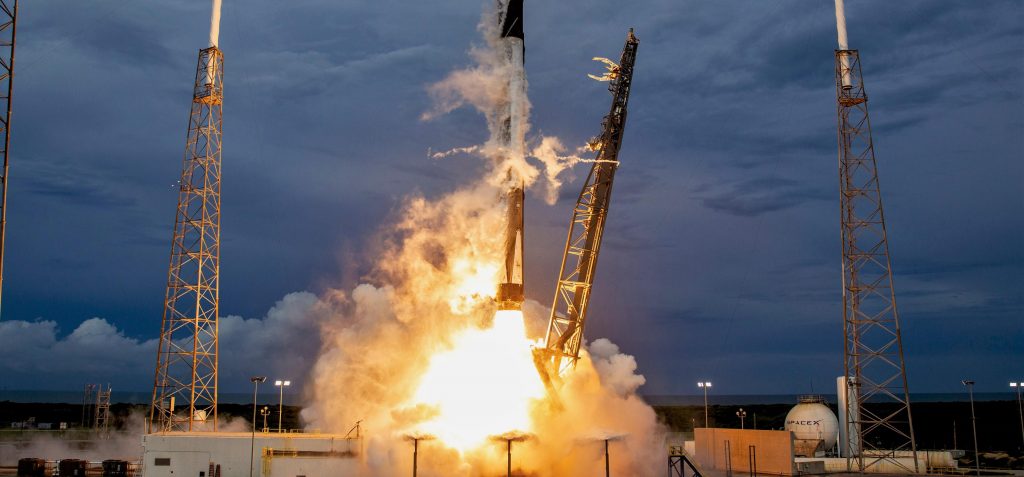
Additionally, it can be almost unequivocally assumed that all but 15-20 of those supposed 70 annual launches would come from SpaceX’s own internal demand for Starlink launch capacity. Assuming no improvements between now and 2024, 50 Falcon 9 launches could place as many as 3000 Starlink satellites in orbit in a single year, equivalent to more than 25% of the entire proposed ~11,800-satellite constellation.
Barring regulatory changes to US Federal Communications Commission (FCC) and International Telecommunication Union (ITU) requirements, SpaceX must launch at least half of all Starlink satellites (~5900) by November 2024 and finish launching the remaining ~5900 by November 2027. If SpaceX fails to reach those deployment milestones, the company runs the risk of losing Starlink’s domestic and international licenses to operate.
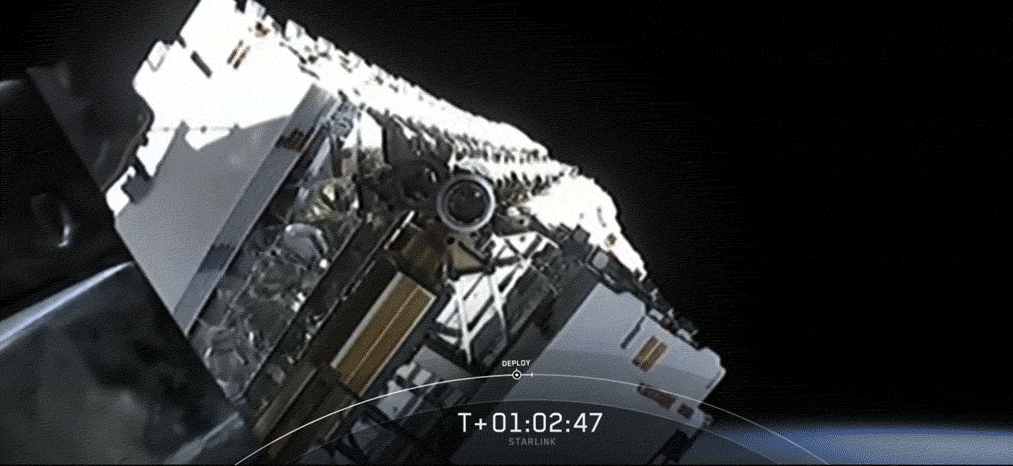
This would help to explain why SpaceX says that it’s planning to reach a maximum cadence of 70 annual launches “by 2024”, given that 2024 will be a pivotal year in the eyes of regulations currently in effect for Starlink.
Starship confusion
As noted in the quote above, SpaceX plans to eventually phase out Falcon 9 and Heavy launches as the company’s next-generation Starship and Super Heavy launch vehicle gradually comes online, proves itself reliable, and begins operational launch activities. According to SpaceX, given just how much mass Starship can nominally launch relative to both Falcon 9 and Heavy, far fewer launches will be needed to accomplish the tasks that would otherwise require several times more launches of SpaceX’s smaller vehicles.
SpaceX’s initial Environmental Assessment for Starship launches from Pad 39A caps the rocket’s maximum cadence at 24 annual launches. Oddly, this directly contradicts the goals set for Starship (formerly BFR) by CEO Elon Musk and SpaceX more generally. By building a launch vehicle that is fully and rapidly reusable, the goal has long been to deliver cheap, aircraft-like access to orbit at a completely unprecedented scale.
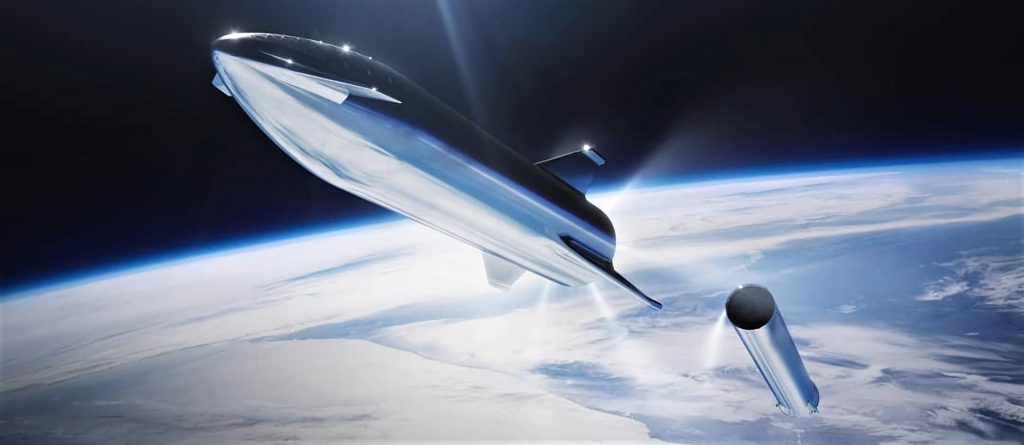
This would technically mean that SpaceX could actually dramatically increase its launch cadence without increasing costs, allowing the company to perform currently nonsensical missions where Starship might launch payloads weighing just 5-10% of its total payload capacity. Airline operations routinely do things of a similar nature, sometimes flying just a fraction of their maximum passenger load to destinations for a variety of reasons.
Additionally, SpaceX has consistently indicated that Starship will rely heavily on orbital refueling to accomplish its ultimate deep space ambitions. Previous presentations from Elon Musk have shown that launches to the Mars or Moon with significant payload would require no fewer than five separate tanker launches and orbital refuelings, all of which would classify as one of the 24 annual launches SpaceX has described in its August 2019 EA draft. On their own, launching two Starships to Mars with 100 tons of payload each would require no fewer than 10-12 launches.
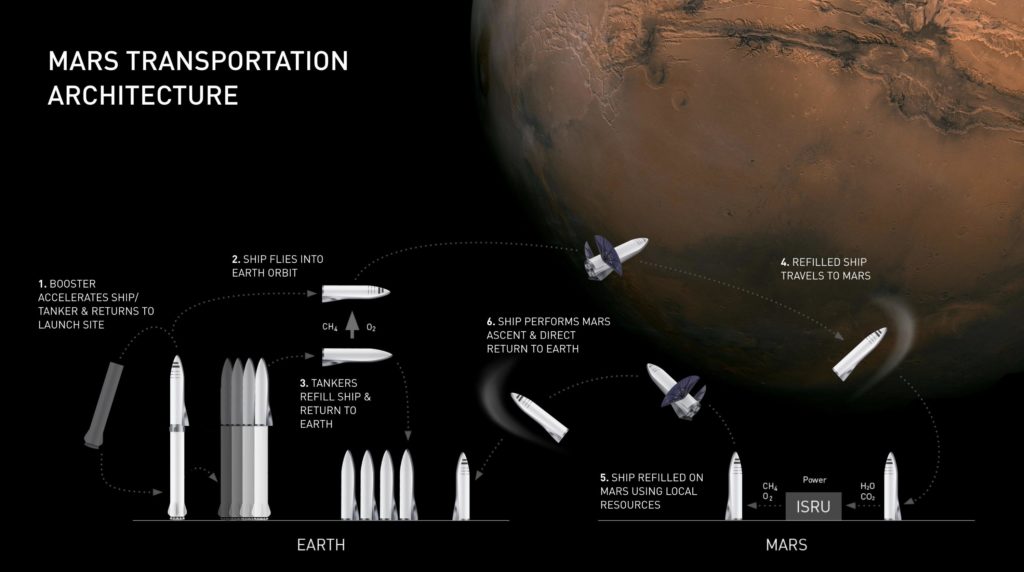
Ultimately, it’s unwise to draw any substantial conclusions from an Environmental Assessment like the one the above information has been taken from. This 39A-specific EA also ignores the possibility of a similar launch facility being developed in Boca Chica, Texas, which SpaceX explicitly acknowledges.
This particular draft is also the first Starship-related EA ever filed by SpaceX, and the company may thus be treating it more as a bare minimum with the intention of eventually pursuing far more ambitious launch rates once Starship has been established.
Check out Teslarati’s Marketplace! We offer Tesla accessories, including for the Tesla Cybertruck and Tesla Model 3.

News
Tesla (TSLA) receives “Buy” rating and $551 PT from Canaccord Genuity
He also maintained a “Buy” rating for TSLA stock over the company’s improving long-term outlook, which is driven by autonomy and robotics.

Canaccord Genuity analyst George Gianarikas raised his Tesla (NASDAQ:TSLA) price target from $482 to $551. He also maintained a “Buy” rating for TSLA stock over the company’s improving long-term outlook, which is driven by autonomy and robotics.
The analyst’s updated note
Gianarikas lowered his 4Q25 delivery estimates but pointed to several positive factors in the Tesla story. He noted that EV adoption in emerging markets is gaining pace, and progress in FSD and the Robotaxi rollout in 2026 represent major upside drivers. Further progress in the Optimus program next year could also add more momentum for the electric vehicle maker.
“Overall, yes, 4Q25 delivery expectations are being revised lower. However, the reset in the US EV market is laying the groundwork for a more durable and attractive long-term demand environment.
“At the same time, EV penetration in emerging markets is accelerating, reinforcing Tesla’s potential multi‑year growth runway beyond the US. Global progress in FSD and the anticipated rollout of a larger robotaxi fleet in 2026 are increasingly important components of the Tesla equity story and could provide sentiment tailwinds,” the analyst wrote.
Tesla’s busy 2026
The upcoming year would be a busy one for Tesla, considering the company’s plans and targets. The autonomous two-seat Cybercab has been confirmed to start production sometime in Q2 2026, as per Elon Musk during the 2025 Annual Shareholder Meeting.
Apart from this, Tesla is also expected to unveil the next-generation Roadster on April 1, 2026. Tesla is also expected to start high-volume production of the Tesla Semi in Nevada next year.
Apart from vehicle launches, Tesla has expressed its intentions to significantly ramp the rollout of FSD to several regions worldwide, such as Europe. Plans are also underway to launch more Robotaxi networks in several more key areas across the United States.
News
Waymo sues Santa Monica over order to halt overnight charging sessions
In its complaint, Waymo argued that its self-driving cars’ operations do not constitute a public nuisance, and compliance with the city’s order would cause the company irreparable harm.

Waymo has filed a lawsuit against the City of Santa Monica in Los Angeles County Superior Court, seeking to block an order that requires the company to cease overnight charging at two facilities.
In its complaint, Waymo argued that its self-driving cars’ operations do not constitute a public nuisance, and compliance with the city’s order would cause the company irreparable harm.
Nuisance claims
As noted in a report from the Los Angeles Times, Waymo’s two charging sites at Euclid Street and Broadway have operated for about a year, supporting the company’s growing fleet with round-the-clock activity. Unfortunately, this has also resulted in residents in the area reportedly being unable to sleep due to incessant beeping from self-driving taxis that are moving in and out of the charging stations around the clock.
Frustrated residents have protested against the Waymos by blocking the vehicles’ paths, placing cones, and “stacking” cars to create backups. This has also resulted in multiple calls to the police.
Last month, the city issued an order to Waymo and its charging partner, Voltera, to cease overnight operations at the charging locations, stating that the self-driving vehicles’ activities at night were a public nuisance. A December 15 meeting yielded no agreement on mitigations like software rerouting. Waymo proposed changes, but the city reportedly insisted that nothing would satisfy the irate residents.
“We are disappointed that the City has chosen an adversarial path over a collaborative one. The City’s position has been to insist that no actions taken or proposed by Waymo would satisfy the complaining neighbors and therefore must be deemed insufficient,” a Waymo spokesperson stated.
Waymo pushes back
In its legal complaint, Waymo stated that its “activities at the Broadway Facilities do not constitute a public nuisance.” The company also noted that it “faces imminent and irreparable harm to its operations, employees, and customers” from the city’s order. The suit also stated that the city was fully aware that the Voltera charging sites would be operating around the clock to support Waymo’s self-driving taxis.
The company highlighted over one million trips in Santa Monica since launch, with more than 50,000 rides starting or ending there in November alone. Waymo also criticized the city for adopting a contentious strategy against businesses.
“The City of Santa Monica’s recent actions are inconsistent with its stated goal of attracting investment. At a time when the City faces a serious fiscal crisis, officials are choosing to obstruct properly permitted investment rather than fostering a ‘ready for business’ environment,” Waymo stated.
News
Tesla FSD v14.2.2 is getting rave reviews from drivers
So far, early testers have reported buttery-smooth drives with confident performance, even at night or on twisty roads.

Tesla Full Self-Driving (Supervised) v14.2.2 is receiving positive reviews from owners, with several drivers praising the build’s lack of hesitation during lane changes and its smoother decision-making, among others.
The update, which started rolling out on Monday, also adds features like dynamic arrival pin adjustment. So far, early testers have reported buttery-smooth drives with confident performance, even at night or on twisty roads.
Owners highlight major improvements
Longtime Tesla owner and FSD user @BLKMDL3 shared a detailed 10-hour impression of FSD v14.2.2, noting that the system exhibited “zero lane change hesitation” and “extremely refined” lane choices. He praised Mad Max mode’s performance, stellar parking in locations including ticket dispensers, and impressive canyon runs even in dark conditions.
Fellow FSD user Dan Burkland reported an hour of FSD v14.2.2’s nighttime driving with “zero hesitations” and “buttery smooth” confidence reminiscent of Robotaxi rides in areas such as Austin, Texas. Veteran FSD user Whole Mars Catalog also demonstrated voice navigation via Grok, while Tesla owner Devin Olsen completed a nearly two-hour drive with FSD v14.2.2 in heavy traffic and rain with strong performance.
Closer to unsupervised
FSD has been receiving rave reviews, even from Tesla’s competitors. Xpeng CEO He Xiaopeng, for one, offered fresh praise for FSD v14.2 after visiting Silicon Valley. Following extended test drives of Tesla vehicles running the latest FSD software, He stated that the system has made major strides, reinforcing his view that Tesla’s approach to autonomy is indeed the proper path towards autonomy.
According to He, Tesla’s FSD has evolved from a smooth Level 2 advanced driver assistance system into what he described as a “near-Level 4” experience in terms of capabilities. While acknowledging that areas of improvement are still present, the Xpeng CEO stated that FSD’s current iteration significantly surpasses last year’s capabilities. He also reiterated his belief that Tesla’s strategy of using the same autonomous software and hardware architecture across private vehicles and robotaxis is the right long-term approach, as it would allow users to bypass intermediate autonomy stages and move closer to Level 4 functionality.








